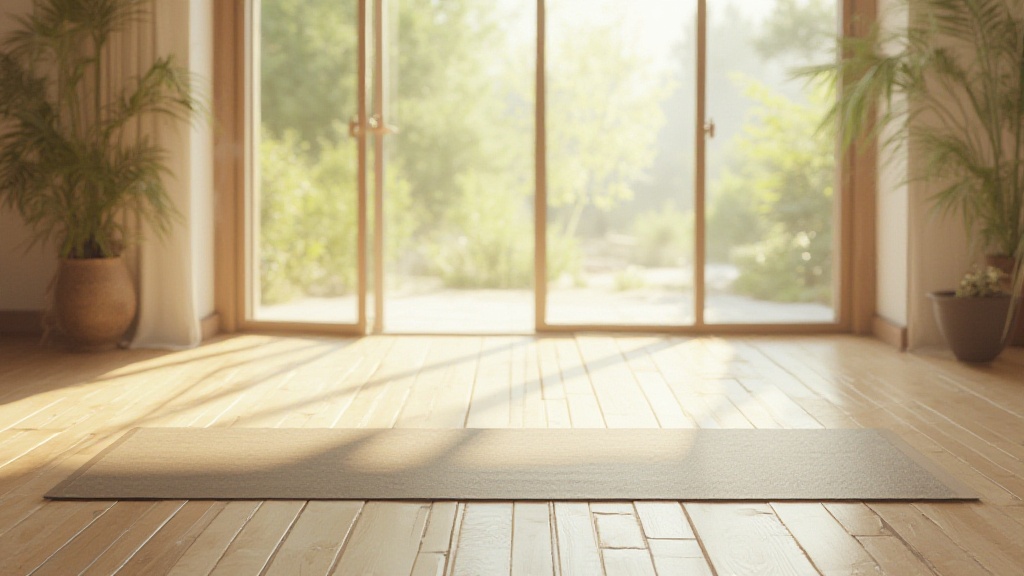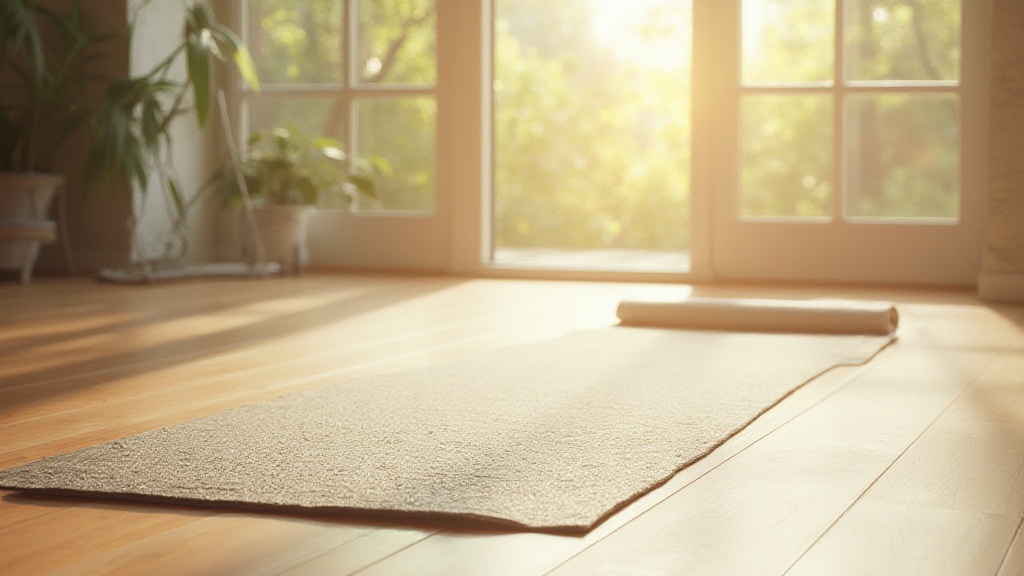
Maintaining stability is essential for daily activities, particularly for aging individuals. Low impact balance workouts significantly improve stability, which aids in fall prevention.
Integrating these workouts into your routine not only promotes better physical health but also enhances overall well-being.
Strengthening core stability through these gentle yet effective exercises leads to greater confidence in movement, paving the way for an active lifestyle.
Benefits Of Balance Exercises For Seniors
Participating in balance exercises provides numerous advantages for overall physical health and independence among seniors.
These exercises enhance core stability, which is vital in preventing falls and promoting self-sufficiency. Studies have shown that regular balance training can yield cognitive benefits, resulting in improved coordination and mental clarity.
For seniors, simple daily routines, such as standing on one leg or practicing heel-to-toe walking, can effectively enhance joint mobility. By incorporating these exercises into their fitness routines, seniors experience improved quality of life and greater well-being.
Daily Routine Suggestions
Implementing simple balance exercises into daily life not only enhances stability but also fosters a sense of achievement.
Proprioception training, which focuses on body awareness, can be seamlessly integrated into household activities.
For instance, practicing gentle movements while engaging in mindfulness exercises encourages concentration and body awareness, further enhancing functional fitness.
Cognitive and Physical Benefits
Evidence suggests that frequent participation in balance workouts contributes to cognitive enhancement, making it easier for seniors to maintain mental sharpness.
These exercises also play a role in injury prevention by reinforcing the body’s ability to adapt to different movement patterns. With consistent practice, seniors can significantly improve their functional mobility, enabling them to engage more actively in their daily routines.

How Stability Workouts Enhance Mobility
Integrating stability workouts into your fitness routine significantly improves mobility. Joint health plays a fundamental role, as these exercises enhance flexibility and strength, creating a balanced approach to movement.
Enhanced joint health through stability workouts leads to better overall mobility.
Mobility exercises, which focus on controlled movements, are essential for maintaining functional fitness.
To integrate stability workouts into daily routines, consider performing balance exercises during commercial breaks or while cooking. This simple adjustment helps build strength and coordination, benefiting your overall mobility while contributing to a more active lifestyle.
The Importance of Joint Health
Joint health contributes significantly to optimal movement patterns.
Engaging in joint-friendly movements through stability workouts protects against discomfort and injury. Joint mobility is enhanced by regularly practicing balance exercises, which can be seamlessly woven into everyday activities.
Practical Tips for Daily Integration
- Perform balance challenges such as standing on one leg while brushing your teeth.
- Utilize stability balls or balance boards for core conditioning during your home workouts.
- Incorporate mindfulness exercises such as yoga to improve concentration and stability.
Core Stability And Injury Prevention Explained
A strong core is foundational for stability and overall health, particularly for seniors. Core stability enhances balance, significantly reducing fall risks during everyday activities. Incorporating gentle exercises targeting the core can enhance stability and prevent injuries, making daily movements safer for individuals. Effective practices include planks, bridges, and seated leg lifts, which are easily performed at home. These exercises not only build strength but also promote better posture and joint mobility, essential aspects of injury recovery and fall prevention.
The Significance of Core Strength
Core strength is indispensable for maintaining proper posture and body awareness. Engaging in core conditioning helps stabilize the pelvis and spine, promoting functional mobility during various activities.
Exercises to Improve Core Stability
- Planks: Hold for 30 seconds, gradually increasing time.
- Bridges: Focus on controlled movements to activate the glutes.
- Seated Leg Lifts: Perform slowly for enhanced core engagement.
Stability Workouts and Mobility
- Regular stability workouts can improve joint flexibility by up to 30%.
- Incorporating balance exercises can reduce the risk of falls in seniors by 50%.
- Core stability exercises enhance overall body awareness and posture, crucial for functional mobility.
- Engaging in stability workouts for just 15 minutes a day can lead to significant improvements in strength and coordination.
Exploring Joint-Friendly Movements In Workouts
Maintaining joint health is essential for seniors engaging in regular exercise. Joint-friendly movements effectively promote long-term wellness, as these low-impact exercises significantly reduce stress on aging joints.
This reduction in stress supports mobility and plays a pivotal role in injury prevention.
Simple bodyweight exercises, such as bodyweight squats and standing leg raises, enhance strength without the need for weights, making them ideal for safe workouts.
Additionally, seated leg lifts serve to strengthen the core while maintaining controlled movements with minimal strain. Incorporating these joint-friendly movements into daily fitness routines not only contributes to overall senior fitness but also enhances joint mobility.
Mindfulness Exercises For Improved Balance
Integrating mindfulness into workouts enhances both physical health and balance skills.
Mindfulness exercises, which can include breathing techniques, significantly improve focus during balance training. This heightened focus allows for better stability and coordination, helping in proprioception training.
A simple yet effective technique is the Breathing Awareness Technique; while balancing, concentrate on your inhalation and exhalation.
This practice not only enhances workout effectiveness but also cultivates mental clarity, which is essential for successful balance exercises and injury prevention.
Joint-Friendly Movements and Mindfulness Exercises
- Low-impact exercises can reduce the risk of joint injuries by up to 50% for seniors.
- Regular engagement in bodyweight exercises can improve muscle strength by 20-30% in older adults.
- Mindfulness practices can enhance focus and balance, leading to a 30% improvement in stability during exercises.
- Incorporating breathing techniques into workouts can reduce stress levels by 40%, promoting overall well-being.
Effective Coordination Drills For Home Fitness
Coordination is essential for achieving balance during physical activities. Enhanced coordination significantly contributes to overall athletic performance, enabling athletes to execute complex movement patterns efficiently.
A highly effective family coordination drill is the Obstacle Course Challenge.
To set this up, gather household items such as chairs and cushions to create an engaging obstacle course.
Each family member can navigate the course while timing themselves, fostering healthy competition. This engaging activity not only provides a playful way to improve coordination but also strengthens family bonds while enhancing fitness.
Incorporating such drills can profoundly impact fitness routines, making them enjoyable and effective.
Safe Workouts: What You Need To Know
Creating a safe workout environment is paramount to protecting oneself from injuries. Personal safety should be a priority during fitness routines, and being aware of one’s limits is essential.
Listening to your body can help avoid overexertion and subsequent injuries.
Effective injury prevention strategies include prioritizing warm-ups, which prepare the body for exercise and significantly reduce injury risks.
Assessing the workout area ensures it is free of clutter and obstacles. Making use of appropriate equipment, such as non-slip mats and comfortable shoes, further enhances safety.
These measures contribute to a more enjoyable and secure home fitness experience, allowing individuals to concentrate on their workouts effectively.
Home Fitness and Safety
- Improved coordination can lead to better athletic performance and reduced risk of injury.
- Warm-ups can decrease the likelihood of injuries by preparing muscles and joints for activity.
- Creating a clutter-free workout space helps prevent accidents and enhances focus during exercise.
- Using non-slip mats and proper footwear can significantly enhance safety during home workouts.
Tips For Incorporating Resistance Bands Into Balance Training
Resistance bands serve as versatile tools that significantly enhance balance exercises by providing adjustable resistance levels. Incorporating these bands into your training routine can improve not just your strength, but also your core stability.
For beginners, a great starting workout includes the Seated Row and Standing Side Leg Lift.
These exercises target essential muscle groups that contribute to stability and functional fitness.
To perform the Seated Row, sit with legs extended, loop the band around your feet, and pull the handles towards your torso while maintaining a straight back.
This exercise effectively aids in developing joint mobility and body awareness. The Standing Side Leg Lift requires you to stand straight, attach the band to an anchor point, and lift your leg sideways against the band’s resistance.
This movement enhances hip strength and mobility, which improve both balance skills and overall fitness.
Focus on controlled movements and proper form to ensure safety and effectiveness. It is advisable to repeat each exercise two to three times a week for optimal results.
Incorporating resistance bands into your balance training routine not only promotes injury prevention but also encourages better awareness of movement patterns.
These joint-friendly movements can be adapted for various fitness levels, making them suitable for everyone, especially those engaging in senior fitness activities.
By adding resistance bands into your workouts, you enhance functionality and create a more dynamic approach to your fitness routines.
This incorporation of bands into balance challenges and stability exercises provides a way to progress while ensuring that workouts remain engaging and effective.
Resistance Bands in Balance Training
- Resistance bands provide adjustable resistance levels, enhancing strength and core stability.
- Exercises like the Seated Row and Standing Side Leg Lift target essential muscle groups for improved stability.
- Incorporating resistance bands promotes injury prevention and better movement pattern awareness.
- These exercises can be adapted for various fitness levels, making them suitable for all, including seniors.
